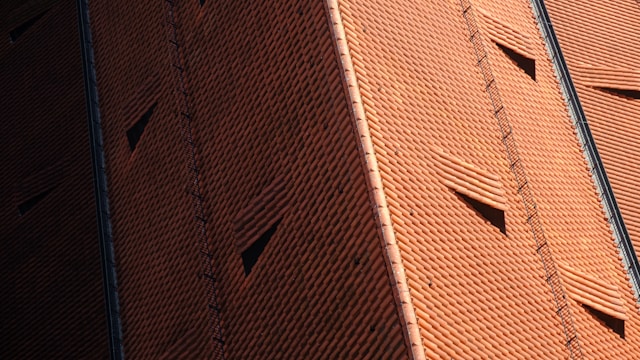Architecture is an essential part of our daily lives, shaping the way we interact and experience the world around us. From grand structures to humble homes, every building has a unique character that reflects the culture and purpose it serves.
Roofs are especially crucial components of architecture, providing protection against weather elements and contributing to the overall aesthetic appeal of a building. In this article, we will explore the role of roofing in architecture, delving into its functions and how it adds value to a structure.
Function: The Shield Against the Elements
A home’s function is to protect its inhabitants from the elements, and the roof plays an integral role in fulfilling that function. A well-maintained roof shields the house from rain, wind, snow, and hail while regulating the temperature inside at the same time. To get the most durable roof, it’s a good idea to have a reliable roofing contractor like Trusted Roofing being able to provide quality materials that can resist the elements in your area. For example, areas with heavy snowfall require roofs with a steeper slope to prevent the buildup of snow and ice, while regions prone to hurricanes need roofing materials that can withstand strong winds.
Design Variations: Roofing Through the Ages
From thatched roofs to modern, sleek designs, the history of roofing spans centuries and continents. Each style reflects the unique needs and preferences of the time and place it was built. The Tudor period in England is known for its ornate, decorative roofing, complete with intricate woodwork. German settlers in the United States brought with them the tradition of sturdy, wood-shingled roofs that could withstand harsh winters.
Today, homeowners can choose from an array of roofing materials and designs, ranging from eco-friendly options to high-end, luxury tiles. Despite the many changes that have occurred over time, the roof remains a crucial part of a building’s overall aesthetic and functionality.
Sustainability: Rooftops and the Green Revolution
Sustainability has become an increasingly important goal around the world, and the idea of green roofs has risen to the forefront of these efforts. Rooftops that are covered in plants and vegetation can reduce pollution and improve the overall quality of air in urban environments.
Green roofs can mitigate the effects of climate change, such as reducing the urban heat island effect. These eco-friendly rooftop gardens can also improve the aesthetic appeal of a city and even provide a source of fresh produce for communities. As more and more cities embrace the green revolution, we can look forward to a more sustainable and vibrant future.
Aesthetics: The Art of Roof Design
Aesthetics is the art of roof design. The shape, material, color, and texture of a roof can all significantly impact the overall appearance of a building. A steeply pitched roof adds drama to a structure while flat roofs create a modern and streamlined look.
Roofs can also be used to convey cultural significance or reflect regional traditions. Pagoda-style roofs in Asia symbolize wealth and prosperity while the Mediterranean-style clay tile roofs evoke a sense of rustic charm.
In addition to its functional role, roofing has evolved into an artistic expression, allowing architects and homeowners to create unique and visually striking designs that add character and distinction to a building.
The role of roofing in architecture is multifaceted. From protecting against the elements to adding aesthetic value and promoting sustainability, roofs are an essential element of any structure. As architecture continues to evolve, roofing will undoubtedly play a central role in shaping the buildings and cities of the future. The next time you look up at a building, take a moment to appreciate the roof that serves both function and beauty in its design.







